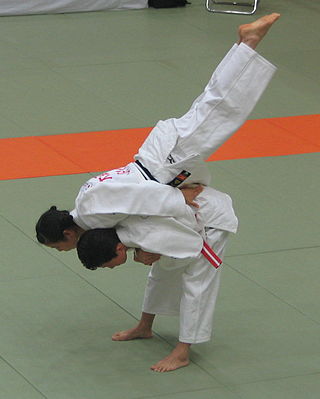Top Qs
Timeline
Chat
Perspective
Ju-no-kata
Judo form/technique From Wikipedia, the free encyclopedia
Remove ads
Ju no Kata (Japanese: 柔の形, Hepburn: Jū-no-kata; "forms of gentleness") is a kata (a set of prearranged forms) in Judo. It is designed to teach the fundamental principles of judo, especially the principle of ju (yielding or gentleness).[1] It consists in three sets of techniques and is performed by a pair of people one acting as an Uke and the other a Tori. The kata can be performed without wearing a judogi and, as it doesn't involve the completion of any throws, does not need to be performed in a dojo.
Remove ads
History
Ju-no-Kata was created by Jigoro Kano around 1887 when the number of people studying Judo had increased to the point where he could no longer advise everyone personally during free practice (randori).[2][self-published source]
Techniques
- First Set
- Tsuki-dashi (Hand Thrust)
- Kata-oshi (Shoulder Push)
- Ryo-te-dori (Two-Hand Hold)
- Kata-mawashi (Shoulder Turn)
- Ago-oshi (Jaw Push)
- Second Set
- Kiri-oroshi (Downward Cut)
- Ryo-kata-oshi (Two-Shoulder Push)
- Naname-uchi (Slanting Strike)
- Kata-te-dori (One-Hand Hold)
- Kata-te-age (One-Hand Lift)
- Third Set
- Obi-tori (Belt Grab)
- Mune-oshi (Chest Push)
- Tsuki-age (Uppercut)
- Uchi-oroshi (Downward Strike)
- Ryo-gan-tsuki (Strike to Both Eyes)
Remove ads
Further reading
- Jigoro Kano, Kodokan Judo, Kodansha International.
- Keiko Fukuda, Ju No Kata: A Kodokan Judo Textbook, North Atlantic Books.
References
External links
Wikiwand - on
Seamless Wikipedia browsing. On steroids.
Remove ads

